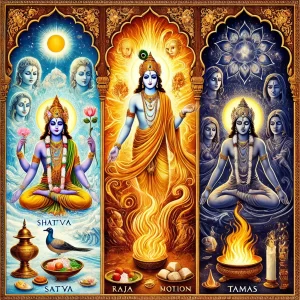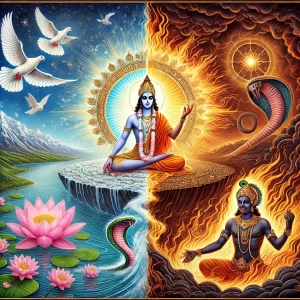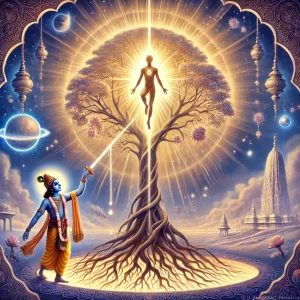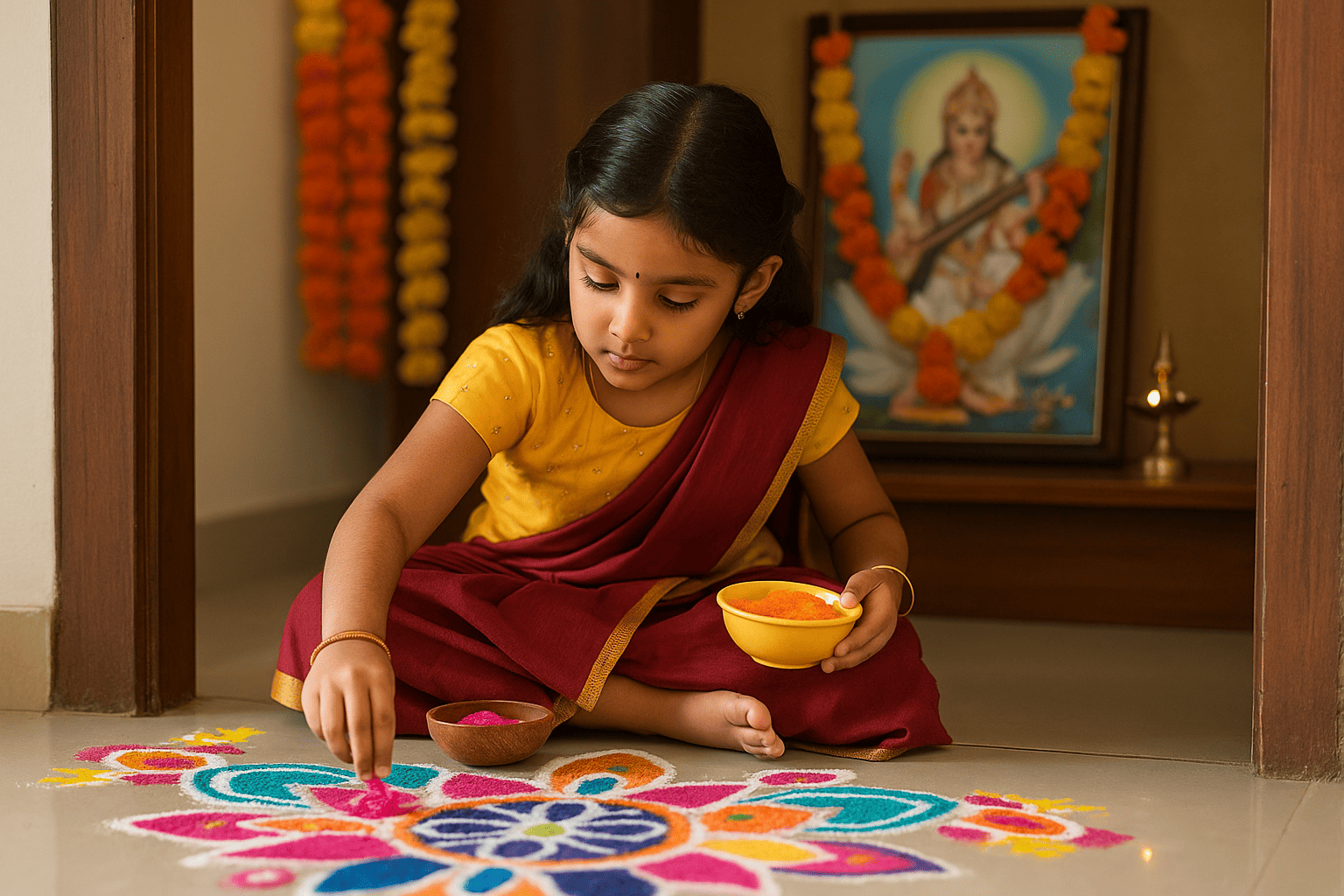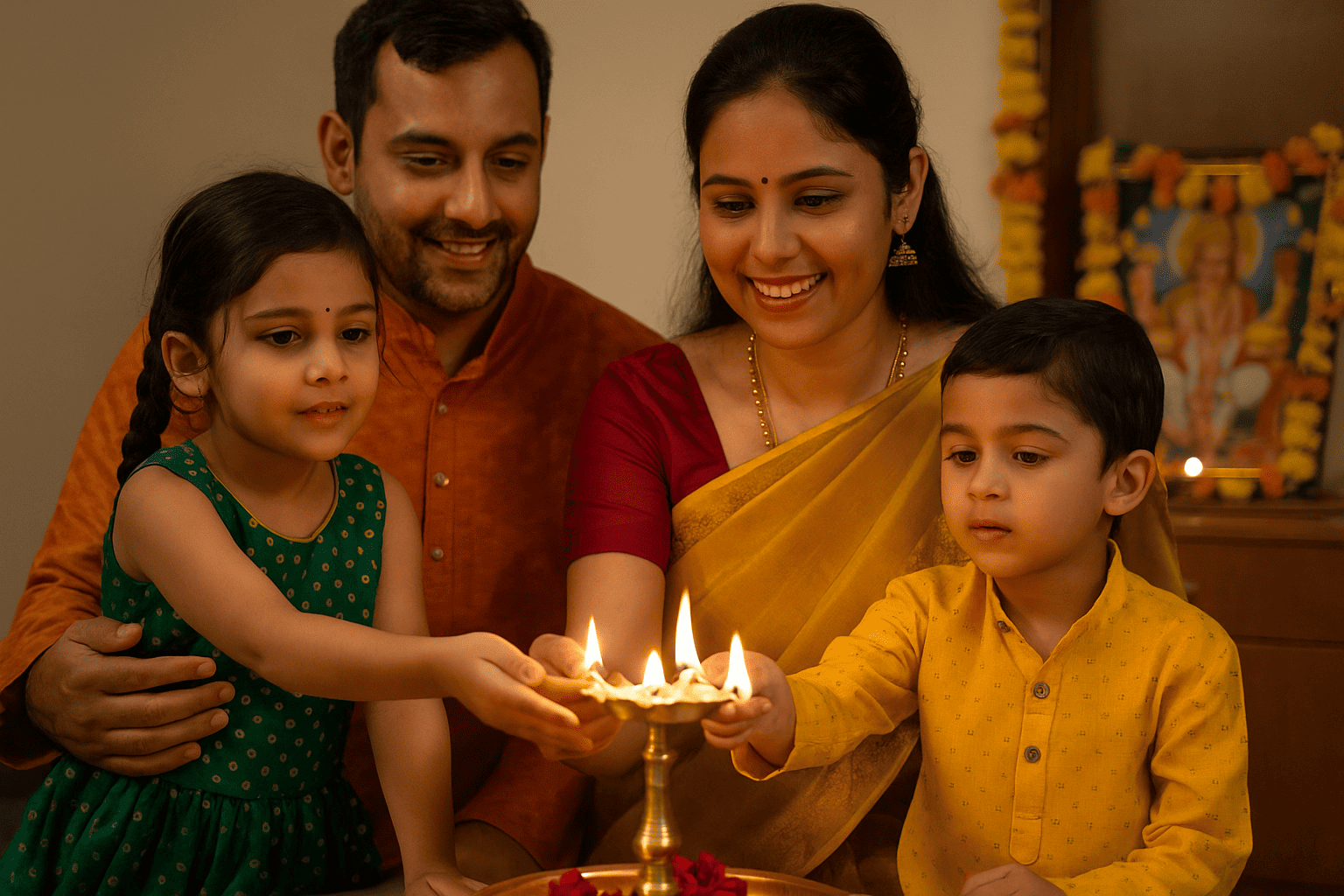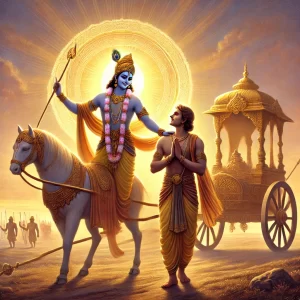
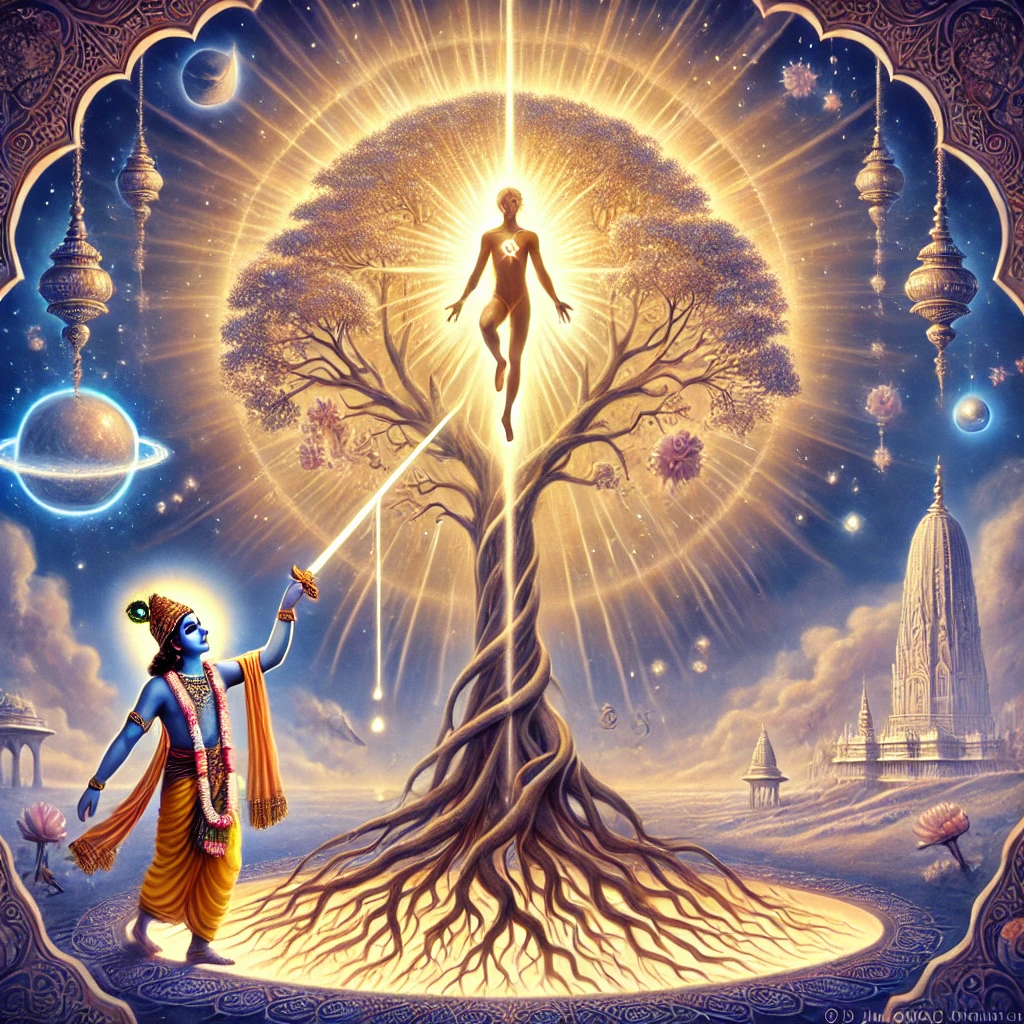
— Purushottama Yoga: The Yoga of the Supreme Person
Chapter 15 of the Bhagavad Gita, known as Purushottama Yoga, is one of the most philosophical and symbolic chapters in the Gita. It explores the eternal nature of the soul, the impermanence of the material world, and the Supreme Being—the Purushottama, who transcends both the perishable and imperishable realms.
Using rich metaphors, especially the famous image of the inverted tree of samsara, Krishna invites us to reflect on where we stand in life—are we rooted in illusion or grounded in truth?
Let’s explore five key life lessons from this chapter and how we can apply them to our everyday experiences..
1. Life Is Like an Inverted Tree—Look to the Root, Not the Branches
KKrishna begins the chapter with a striking image: a tree growing upside-down, with its roots above (in the divine) and branches below (in the material world). This is the Ashvattha Tree, symbolic of the endless cycle of birth and death (samsara).
Verse 1: “The eternal Ashvattha tree has its roots above and branches below. Its leaves are the Vedic hymns, and he who knows this tree is a knower of the Vedas.”
Lesson: Most of us are entangled in the branches—material desires, temporary roles, status, and pleasure. But we often forget our true root, which is the Divine Self. When you’re lost in chaos, pause and ask: Am I rooted in truth, or just chasing the branches?
2. Cut the Bonds of Attachment with the Axe of Detachment
Krishna urges Arjuna to cut down this tree with the weapon of non-attachment, so one can find the eternal source that lies beyond it—the Supreme Reality.
Verse 3–4 (paraphrased): “With strong determination, cut down this deeply rooted tree… then seek that place from which there is no return.”
Lesson: Letting go doesn’t mean giving up life—it means freeing yourself from unhealthy attachment to things that are always changing. Relationships, goals, and success are part of life—but clinging to them causes pain. Learn to engage fully but hold lightly.
3. The Soul Is Eternal, but Its Journey Depends on Awareness
Krishna explains that the soul (jiva) carries its subtle impressions from one body to the next—like the wind carrying fragrance from a flower. The soul’s journey is shaped by awareness and karma.
Verse 8: “As the air carries scents from their source, so the soul carries its impressions from one body to another.”
Lesson: Every thought, emotion, and action leaves an imprint. If you cultivate peace, truth, and compassion now, your soul becomes lighter and more luminous—now and in the future. Live mindfully. You’re shaping more than just your day—you’re shaping your destiny.
4. The Divine Is the Inner Light in All Living Beings
Krishna beautifully reveals that He is the inner essence behind all functions of life—memory, knowledge, the digestive fire, the light of the sun and moon, and the very Self that sustains all.
Verse 12–15 (summary): “I am the light in the sun and moon… I am the fire of digestion… I dwell in the hearts of all beings.”
Lesson: God is not somewhere else. The Divine is in your breath, your awareness, your creativity, your strength, your inner knowing. Start noticing the sacred in ordinary life. Even mundane moments can become spiritual when you see them with reverence.
5. Purushottama—The Supreme Self—is Beyond All Dualities
Krishna describes three realities:
Verse 16–18: “Beyond both the perishable and the imperishable is the Supreme Person, who enters and sustains the three worlds.”
Lesson: You are more than your body (which perishes) and more than your ego or even intellect (which feels separate). You are a spark of Purushottama, the infinite divine consciousness. Remembering this lifts you above fear, loss, and limitation.
Final Thoughts
Chapter 15 of the Bhagavad Gita is both deeply philosophical and incredibly practical. It helps us shift from surface-level living to soul-level awareness. It reminds us that behind all temporary appearances lies an eternal truth—the Self, the Source, the Supreme.
“He who knows Me as the Purushottama knows everything, and worships Me with all his heart.” – Gita 15:19“
In daily life, practice:
And remember—your roots are not in the noise of the world, but in the stillness of the soul.

